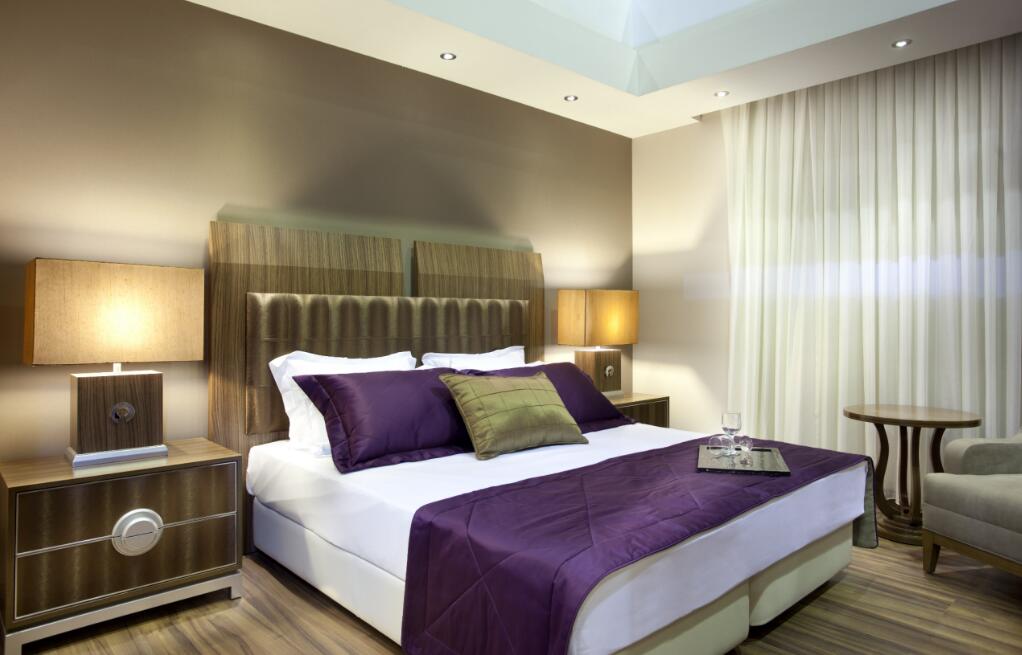
The generation of basic light switches and manual adjustments is a thing of the past. Nowadays, lighting control systems in modern hotels serve as silent conductors, coordinating a seamless blend of aesthetics, energy efficiency, and guest preferences.
Indeed, the skill of creating an environment that effortlessly combines aesthetics with functionality has discovered its inspiration in the careful coordination of lighting control systems.
In today’s hospitality scene, the discussion commences with the strategy of illumination. It involves a subtle interplay between form and function, possessing the capability to either enhance or detract from the overall guest experience.
However, in the pursuit of a sustainable and adaptable lighting setup, smart and wireless controls have taken the lead. This comprehensive approach not only simplifies the challenges of hiding wires but also allows for easy reconfigurations in the constantly changing layout of hotel spaces.
This article explores the complex network of technologies that empower such systems in modern hotels, revealing their crucial role not only in lighting up certain spaces but also in crafting memorable experiences for guests.
How Lighting Control Systems Work in Modern Hotels
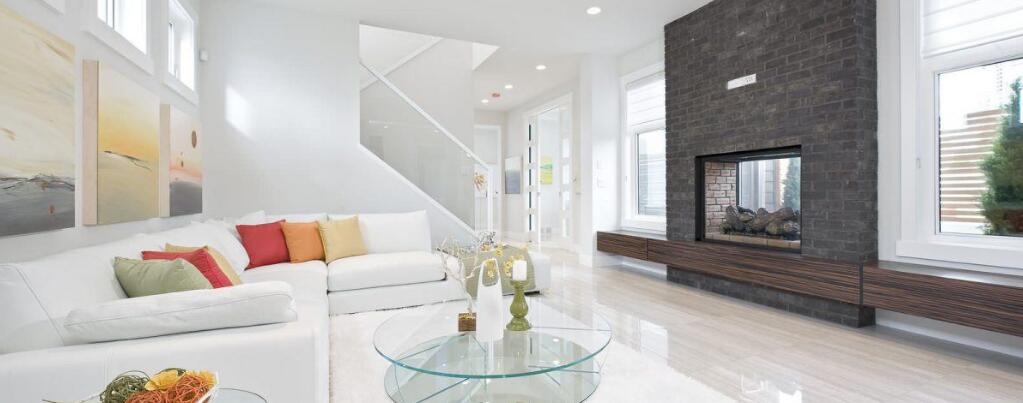
In modern hotels, achieving the perfect balance between ambiance and energy efficiency reaches a whole new level with streamlined lighting control systems. These sophisticated systems seamlessly incorporate sensors and energy-efficient lighting solutions, providing nuanced control over illumination levels.
Here are several methods employed by lighting professionals when installing lighting control systems in hotel environments:
Automation at its Core
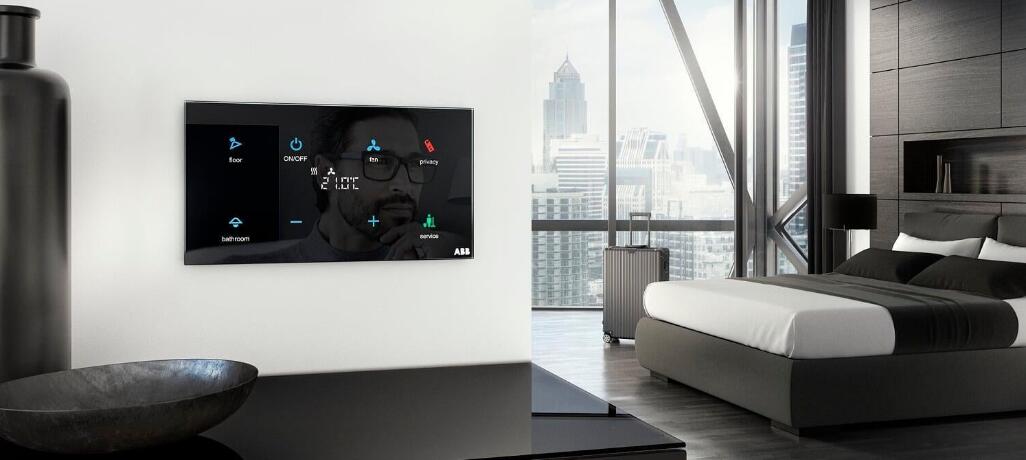
One of the significant advancements in these systems revolves around automation. Lighting control systems have progressed to include intelligent dimmers and switches, facilitating remote control and internet-based adjustments.
This level of automation enables precise monitoring and control, aligning lighting with usage patterns and requirements. The outcome extends beyond energy savings, translating into a tangible reduction in operational costs for hotel owners.
Aside from that, automated lighting control systems provide a centralized platform where hotel staff can monitor and manage the lighting infrastructure of the entire property from a single location. This centralized control hub allows for comprehensive oversight, ensuring that lighting settings are consistent, and any adjustments can be made uniformly across various spaces.
Centralized control minimizes the time and effort required for routine tasks related to lighting. Instead of individually adjusting lights in different areas, hotel staff can make changes globally, saving time and reducing labor costs. This efficiency is particularly valuable in large hotel properties where numerous lighting points are spread across various sections.
Scene Control Precision

To eliminate confusion and enhance guest experience, scene control takes center stage. Unlabeled switches are replaced with labeled counterparts, each equipped with powerful functions.
Scene-based lighting control ensures consistency in-room experiences, providing guests with carefully designed presets crafted by lighting and interior designers. From the convenience of an ‘All Off’ scene to the wireless and maintenance-free switches, hotels can curate lighting experiences that are both intuitive and technically sophisticated.
‘Welcome’ Lights and Smooth Transitions

The advent of welcome lights adds a touch of elegance to guest arrivals. Normally activated when the entrance door is opened, these lights usher guests into a pre-selected lighting scene, eliminating the traditional hassle with keycards.
Equally important is the emphasis on smooth transitions between scenes. Unlike abrupt lights that can be disruptive, lighting control systems prioritize soft transitions, ensuring a visually pleasing experience for occupants.
Voice Control and Smart Assistants
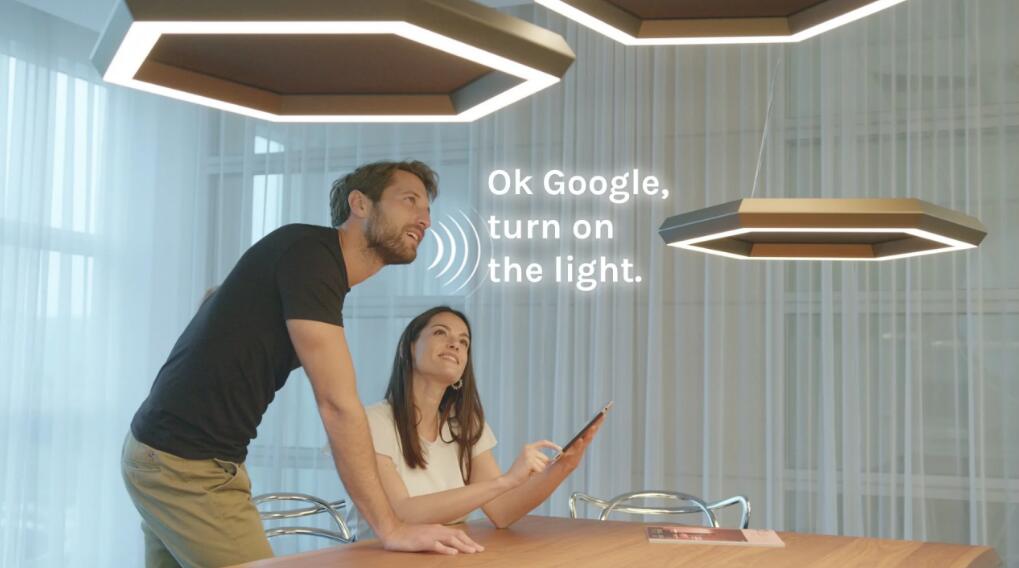
VIDEO - Smart Lighting Scene: Hotel
The rise of voice control and smart assistants has permeated the hospitality industry, offering a hands-free and intuitive way for guests to interact with lighting systems.
Voice-activated commands enable guests to control not only the illumination levels but also other room features, creating a more convenient and connected experience. Integration with popular voice-activated platforms like Amazon Alexa or Google Assistant allows for a seamless transition between guest commands and responsive lighting adjustments.
Intelligent Lighting for Comfort
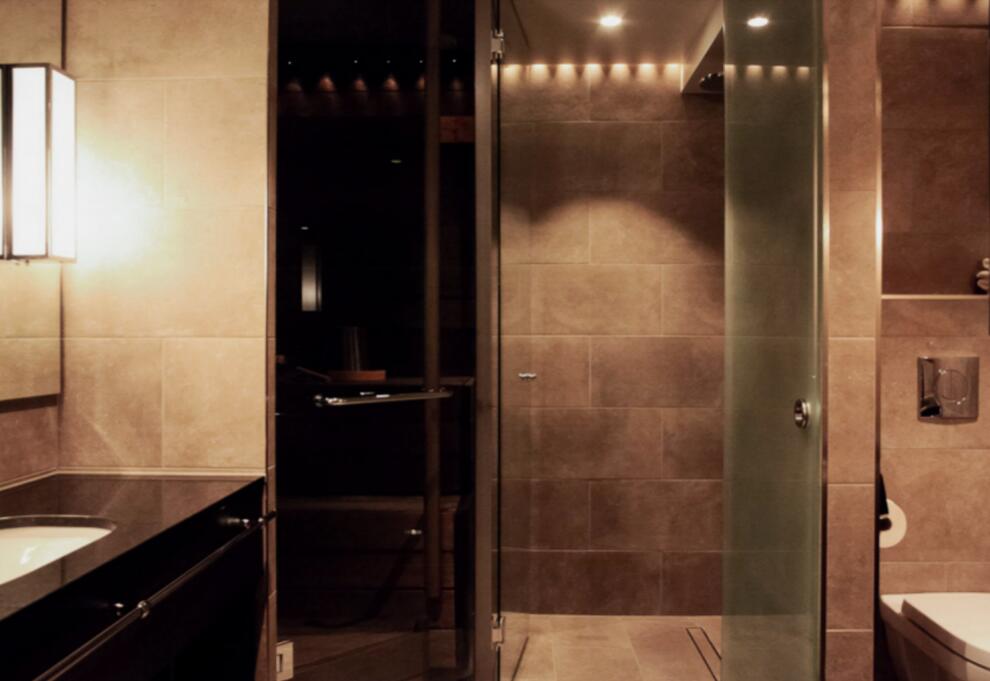
Considerations for guest comfort extend beyond visual aesthetics. The system intelligently manages bathroom lighting, preventing rude awakenings with bright lights in the middle of the night.
By automatically adjusting the intensity based on the time of day, guests come across a seamless transition from bright lights during the day to a soothing dark mode at night.
Adaptive Lighting for Well-Being

Adaptive lighting, which adjusts to mimic natural light patterns, is gaining traction in the hotel industry. This technology considers the circadian rhythms and well-being of guests by dynamically altering the color temperature and intensity of lights throughout the day. This not only heightens the overall guest satisfaction but also contributes to improved sleep quality and overall comfort.
Hotels are increasingly recognizing the impact of lighting on guest well-being and are adopting adaptive lighting systems to provide a more holistic and health-oriented stay.
Hotel Rooms with Bedside Lighting Control
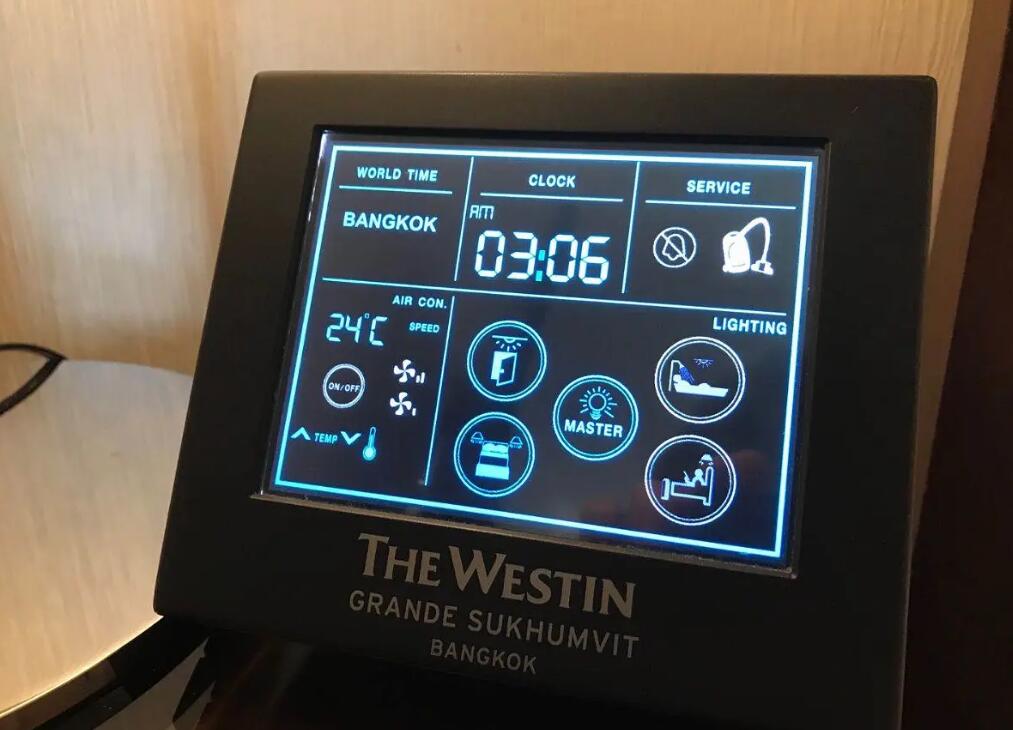
Hotel rooms equipped with bedside control for lighting represent a sophisticated and guest-centric approach to room design. This innovative feature allows guests to conveniently control various aspects of the room’s lighting directly from a bedside panel or control unit.
The guests can adjust the intensity of specific lights in the room, including overhead lights, bedside lamps, and any other installed fixtures. Bedside control systems often include preset lighting scenes. For example, a “Reading” preset might activate a focused, well-lit setting, while a “Night” preset could create a subdued and calming ambiance.
Generally, the interfaces of bedside control units are designed to be intuitive and user-friendly. Touchscreens or simple button layouts allow guests to make adjustments easily, even if they are not tech-savvy.
The Benefits of Streamlined Lighting Control System Operations in Modern Hotels

In modern hotels, the operational efficiency of lighting control systems emerges as a critical focal point. A streamlined approach to these operations is not merely a convenience but an essential element that directly impacts the guest experience and overall sustainability.
* Energy Optimization
The imperative to streamline lighting control system operations stems from the need for meticulous energy management. In modern hotels, where these systems are omnipresent and often operational around the clock, inefficiencies translate into substantial energy wastage.
By streamlining operations, hotels can strategically manage lighting levels, employ occupancy-based controls, and implement intelligent scheduling, all contributing to a significant reduction in energy consumption.
*Seamless Integration and Interoperability
Streamlining operations facilitates seamless integration with other building management systems. This interoperability ensures that lighting controls harmonize with HVAC systems, shading solutions, and other smart technologies.
A unified system enhances overall operational efficiency and enables comprehensive control from a centralized interface, fostering an interconnected ecosystem within the hotel infrastructure.
*Maintenance Efficiency
Efficient lighting control system operations streamline maintenance processes. Proactive monitoring, diagnostics, and remote troubleshooting become more attainable, reducing downtime and minimizing disruptions to guest services.
A streamlined approach allows for predictive maintenance, where potential issues can be identified and addressed before they escalate, ensuring sustained reliability.
*User Interface Optimization
Modern hotels demand intuitive user interfaces for lighting control systems. Streamlining operations involves optimizing user interfaces to facilitate ease of use for hotel staff.
Clear, concise controls enable quick adjustments, minimizing the learning curve for new personnel and ensuring consistent and effective management across various spaces within the hotel.
*Guest Experience Enhancement
From a technical standpoint, the smooth operation of lighting control systems is crucial for enhancing the guest experience. The ability to effortlessly align dynamic lighting scenarios with guest preferences adds a valuable dimension to this improvement.
Personalized lighting scenes, occupancy-driven adjustments, and integrated controls with room automation systems collectively create a sophisticated, responsive environment, elevating the overall quality of stay for guests.
*Smart Scheduling for Efficient Resource Allocation
Efficiency is not just about turning lights on or off; it’s about smart scheduling. Streamlined operations allow hotels to program lighting based on occupancy patterns, events, or even natural light availability. It’s a proactive approach to resource allocation, ensuring that energy is utilized precisely when needed and conserved when it’s not.
What to Remember When Choosing Lighting Control Systems for Modern Hotels
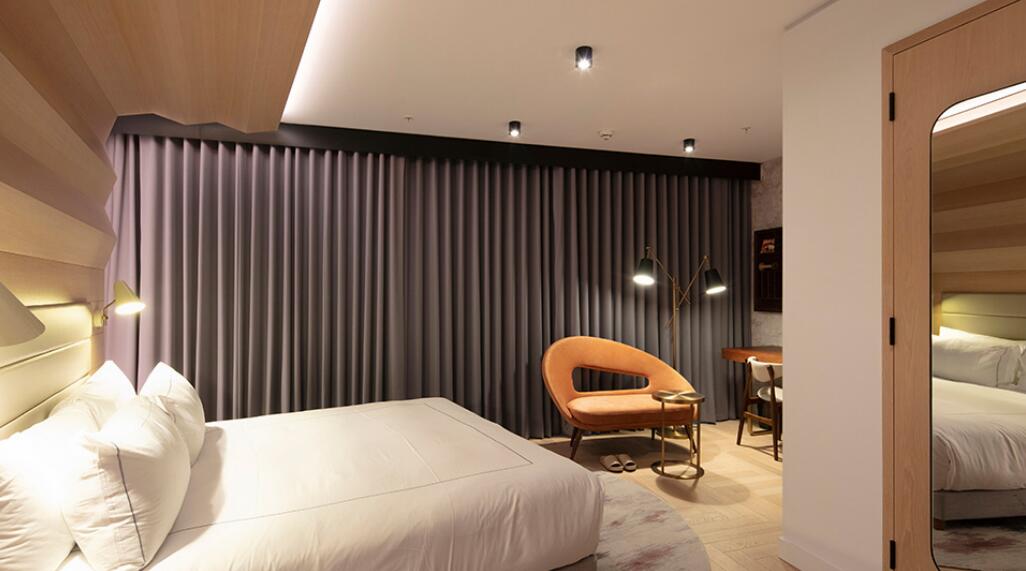
If you are a hotel owner or a lighting company that plans to collaborate with hotels, keep in mind that it’s not just about the technical details; it’s about understanding their key role in shaping the convenience and feel of the hospitality experience.
- Give priority to systems that optimize energy usage, especially those running around the clock. Choosing features that promote energy efficiency not only aligns with sustainability goals but also helps manage operational costs effectively.
- The ease of using the system is crucial. Select solutions with an intuitive interface to ensure that staff can navigate and understand available options effortlessly.
- Given the continuous operation in hospitality, endurance as well as longevity are both a must. Choose robust lighting solutions to minimize the need for frequent replacements and reduce disruptions in maintenance.
Final Words
The evolution of lighting control systems has propelled modern hotels into an era where the interplay of aesthetics, energy efficiency, and guest preferences takes center stage.
The shift from basic light switches to advanced automation has not only streamlined operational efficiency but has also redefined the essence of guest comfort in modern hotels. Moreover, the imperative to streamline lighting control system operations arises not just from the need for energy optimization but from a broader commitment to guest satisfaction and sustainability.
As we wrap things up on the magic of advanced lighting control systems, we want to leave you with this thought – you’re not just running modern hotels or lighting companies; you’re crafting experiences, setting the mood, and steering innovation.






